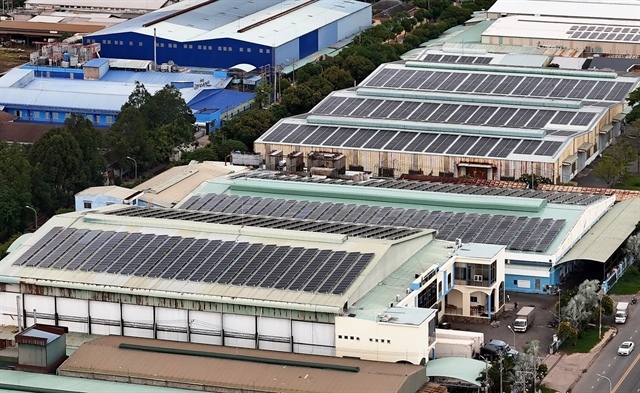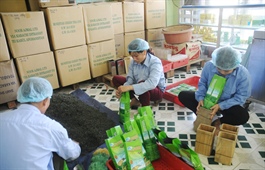Viet Nam strives for export growth of 5-6 per cent in 2021-30
Viet Nam strives for export growth of 5-6 per cent in 2021-30
Viet Nam has set a goal of achieving an average export growth rate of 6-7 per cent in the 2021-30 period, following the Government's strategy on import and export released on Wednesday.

Specifically, the country sets an annual average export growth goal of 8-9 per cent between 2021 and 2025 and 5-6 per cent in the subsequent five years.
Meanwhile, annual import growth is expected to average 5-6 per cent in 2021-30. The growth will be 7-8 per cent in 2021-25 and 4-5 per cent in the following five years.
Under the strategy, the State expects to achieve a trade balance by 2025 and a sustainable trade surplus by 2030 period.
Manufactured and processed products will account for 88 per cent of export turnover by 2025 and 90 per cent by 2030 with the proportion of exported medium and high-tech goods reaching about 65 per cent by 2025 and 70 per cent by 2030.
By 2025, Asia will make up 49-50 per cent of the country's total export turnover, 46-47 per cent by 2030. It will be followed by the Americas with 32-33 per cent by 2025 and 33-34 per cent by 2030 and Europe with 16-17 per cent by 2025 and 18-19 per cent by 2030.
The Government targets increasing the proportion of value-added, high-tech, green, and environmentally friendly products, pursuant to the strategy.
For agro, forestry and fishery goods, the strategy's goal is to increase the proportion of deeply processed products with high economic value; improve their abilities to meet regulations, quality standards, food hygiene and safety, standards of social responsibility and environment; proactively adapt and overcome trade barriers and trade remedies in foreign markets.
In terms of the industrial goods, the top priority will be given to increasing the domestic value of exported goods while reducing dependence on imported raw materials, spare parts and components.
The strategy also emphasises the importance of controlling the export of domestically produced goods, luxury goods, and non-essential products while facilitating the import of modern machinery and equipment, and advanced production lines from countries with developed industries. This will create a premise to improve the productivity, quality and competitiveness of export products and carry out an in-depth restructuring of export goods.
Furthermore, greater efforts will be made in diversifying export markets in order to avoid excessive dependence on one market and ensure a healthy and reasonable bilateral trade balance.
Effectively exploiting opportunities brought by international economic integration commitments in free trade agreements (FTAs) to boost exports to major markets such as the EU, Japan, South Korea, and ASEAN and deeply penetrating into potential markets like the US, Russia, India, Africa, the Middle East and Latin America are parts of the strategy.
Both imports and exports rose strongly in the first quarter, according to the latest updates of the General Statistics Office.
Total trade stood at US$176.35 billion, up 14.37 per cent year-on-year, with exports rising by 12.9 per cent to $88.58 billion and imports by 15.9 per cent to $87.77 billion.
Most key exports achieved high growth, helping the trade balance climb into positive territory.
Major markets like the US, EU, South Korea, and Japan increased their imports of Vietnamese goods. The US was the largest export market of Viet Nam in the first quarter of this year, with a revenue of $25.57 billion, up by 15 per cent from the same period last year.
Exports to the US reached $11.21 billion, up 16.3 per cent, ASEAN $8.1 billion, up by 19.9 per cent, South Korea $6.26 billion, up 21 per cent and Japan $5.4 billion, up 10.6 per cent.
Both exports volume and value were up, especially for agricultural produce, crude oil, fertilisers and plastics.
Another 16 products joined the $1 billion list, in which five saw exports of more than $5 billion.
Experts forecast that the nation's total import-export revenue might hit a record $700 billion by the year-end, driven by the enforcement of new-generation FTAs.
The Ministry of Industry and Trade targeted that Viet Nam would maintain a trade surplus this year and exports would grow by 6-8 per cent to reach around $363 billion.
























